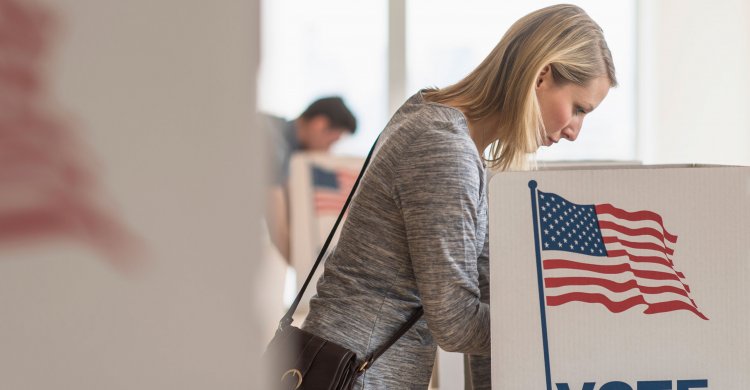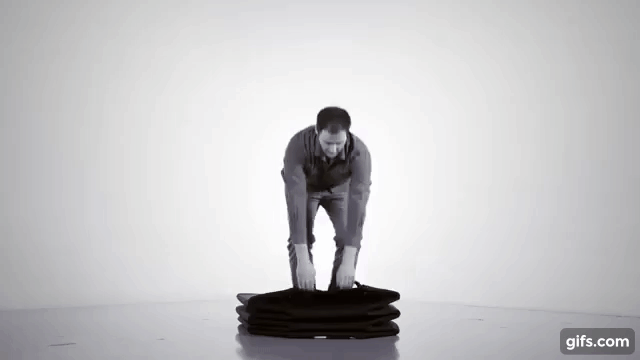Election Law Landscape in Constant Flux Ahead of Midterms
In 2020, we saw more lawsuits filed over election laws and rule changes than in any prior year of American history. And with the congressional... Read More The post Election Law Landscape in Constant Flux Ahead of Midterms appeared first on The Daily Signal.

In 2020, we saw more lawsuits filed over election laws and rule changes than in any prior year of American history. And with the congressional midterms fast approaching, litigation and other developments just keep coming.
Pennsylvania
In Pennsylvania, the Commonwealth Court, one of two appellate courts in the state, issued a ruling recently holding that a change made by the legislature in 2019 to the law governing absentee ballots violated the state constitution.
The opinion outlines the history of absentee ballots in Pennsylvania, which started with the 1864 presidential election, when many Pennsylvania men were members of the Union Army and out of the state.
In 2019, the legislature amended state law that required a qualified voter to have a reason to use an absentee ballot and turned Pennsylvania into a “no fault” absentee-voting state, where any voter can use an absentee ballot with no excuse required.
However, in a lengthy ruling, the Commonwealth Court held that the legislature didn’t have the power to make that change.
Section 14 of Article VII of the state constitution authorizes the legislature to provide a method of voting—such as absentee ballots—for residents who will be “absent from the municipality of their residence because their duties, occupation or business require them to be elsewhere”; are “unable to attend at their proper polling places because of illness or physical disability”; or unable to vote at their polling place due to their “observance of a religious holiday.”
In other word, the Pennsylvania Constitution does not allow no-fault absentee voting and the only way to change that in Pennsylvania is through a constitutional amendment according to the Commonwealth Court.
Of course, what remains unanswered is how many absentee ballots were accepted by Pennsylvania election officials in the 2020 election under this amendment that has now been found unconstitutional? The voters did nothing wrong, but their votes should never have been counted because they were unlawfully cast.
The decision has already been appealed to the Pennsylvania Supreme Court, which has five Democratic and two Republican elected judges.
New York
In New York, a second lawsuit has been filed against the New York City law that allows permanent resident aliens and those aliens authorized to work in the U.S. who have resided in New York City for at least 30 days to vote in local elections.
The first lawsuit asserts that the new law violates the New York state constitution, which makes citizenship a qualification to vote in all state, local, and municipal elections in New York.
The second lawsuit was filed by the Public Interest Legal Foundation (on whose board I serve) on behalf of four African American registered voters in New York City, including Deroy Murdock, a columnist and Fox News commentator.
This lawsuit is filed under the 15th Amendment to the U.S. Constitution, the last of the Reconstruction amendments ratified in 1870, which prohibits the right to vote being “denied or abridged … on account of race, color, or previous condition of servitude.”
The complaint claims that the New York City law violates the 15th Amendment because it was passed “with the impermissible racial purpose of intentionally abridging the voting strength of Black voters and other racial groups in New York City.”
The complaint cites very specific statements made in public hearings by members of the City Council, such as now-former council member Ydanis Rodriguez, which make it clear this law had a “consistent and explicit racial purpose” to increase the voting strength of Hispanics and Asians, thus diluting the vote of black and white residents of the city. Such a racial motive in enacting election laws is banned by the 15th Amendment.
Alabama
On Feb. 7, in response to an emergency appeal by Alabama, the U.S. Supreme Court in a 5-4 decision in Merrill v. Milligan stayed a lower court decision that ordered Alabama to redraw its new congressional districts by Feb. 11, despite the absentee voting period for the state’s primary starting less than two months from now on March 30.
As Justice Brett Kavanaugh explained in his concurrence, the stay wasn’t on the merits of the lower court decision, but the fact that it was too close to the election. As the Supreme Court has previously ruled, “federal district courts ordinarily should not enjoin state election laws in the period close to an election.”
The lower court decision claimed that Alabama’s new congressional district plan, which was adopted following the 2020 census, violated Section 2 of the Voting Rights Act, which bans racial discrimination in voting.
It was an odd decision that itself may have violated Section 2. Why? Because Alabama has had seven congressional districts for more than 50 years, since 1970. Of those seven districts, it has had one “majority-minority” district in which black Alabamians are a majority of the voters and thus can elect “their candidate of choice” since 1992.
When the Alabama Legislature drew the new congressional districts, it maintained the status quo: seven congressional districts, one of which is a majority-minority black district.
Only slight changes were made in the boundaries. Yet, the lower court suddenly claimed that the state should have created two “black” districts and was somehow racially discriminating and diluting the votes of black Alabamians when it didn’t do so, despite the fact that the black population in Alabama today is proportionally virtually the same as it was after the 2010 census.
Although its decision has now been stayed, the lower court apparently thinks that black Alabamians must get a second congressional district because they are about a quarter of the population.
The court seems to be violating or ignoring the specific language in Section 2 of the Voting Rights Act, which states emphatically that “nothing in [Section 2] establishes a right to have members of a protected class elected in numbers equal to their proportion in the population.”
As Kavanaugh noted, the “case law in this area is notoriously unclear and confusing.”
The result of the Supreme Court’s ruling is that the case will now proceed at a normal pace, meaning the Supreme Court will not make a decision on the merits until “the Court receives full briefing, holds oral argument, and engages in our usual, extensive internal deliberations” said Kavanaugh.
Election Fraud
Finally, several new convictions for election fraud spanning the country, from Texas to California to Tennessee, illustrate that fraud does happen in our elections, contrary to what you constantly hear from the mainstream media and those opposed to commonsense reforms.
The convictions include Memphis Black Lives Matter chapter founder Pamela Moses, a convicted felon on prior charges of tampering with evidence and forgery, as well as misdemeanor charges of perjury, stalking, and theft.
She submitted a false certificate claiming she was no longer on probation and thus was eligible to register and vote again. She was found guilty of registration fraud by a jury, and the judge admonished her for “tricking” the probation department and voting illegally six times.
Three individuals in Gregg County, Texas—including a county commissioner, his wife, and a campaign staffer—pleaded guilty to election fraud in the 2018 Democratic primary Longview City Council election. (The case demonstrates that sometimes election fraud is committed against other members of the same party.)
They organized a scheme to harvest more than 100 absentee ballots by “assisting” voters with absentee- ballot requests, misleading them about the requirements for those ballots and filling out the applications, sometimes falsely claiming the voters were disabled—without their knowledge or consent.
And finally, in Compton, California, three individuals have pleaded guilty to illegally registering to vote for the June 2020 City Council runoff election at the address of a former member of the City Council, when they didn’t actually live in Compton.
That race was decided by one vote, and fraud charges against three other individuals—including the City Council member who won that race—are still pending.
It was a striking example of what the U.S. Supreme Court said in 2008 in its ruling in Crawford v. Marion County Electoral Board: “[N]ot only is the risk of voter fraud real but … it could affect the outcome of a close election.”
As all of these developments show, the fight to ensure election integrity and fair representation in our democratic process is ongoing.
Have an opinion about this article? To sound off, please email letters@DailySignal.com and we’ll consider publishing your edited remarks in our regular “We Hear You” feature. Remember to include the url or headline of the article plus your name and town and/or state.
The post Election Law Landscape in Constant Flux Ahead of Midterms appeared first on The Daily Signal.
















